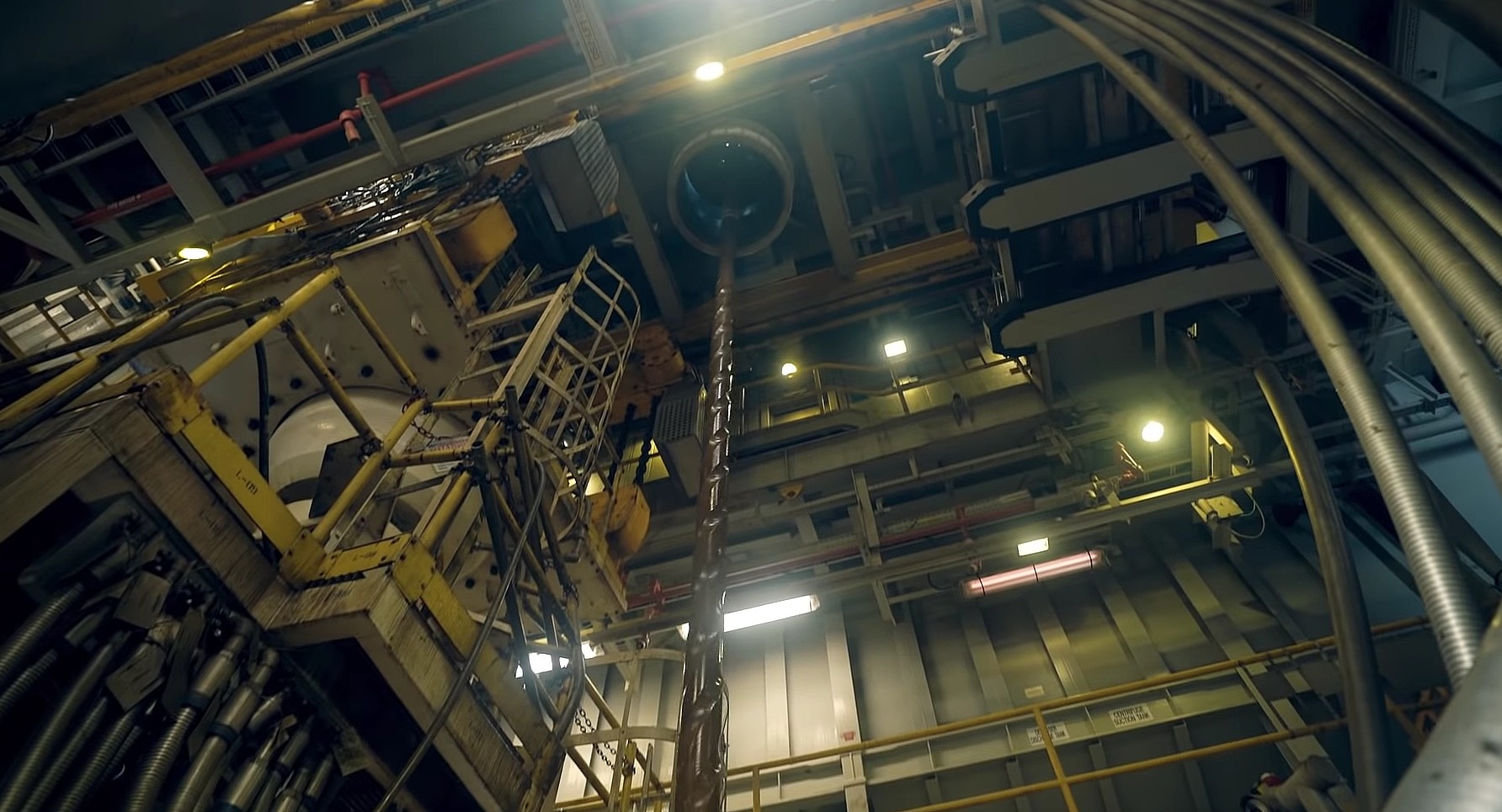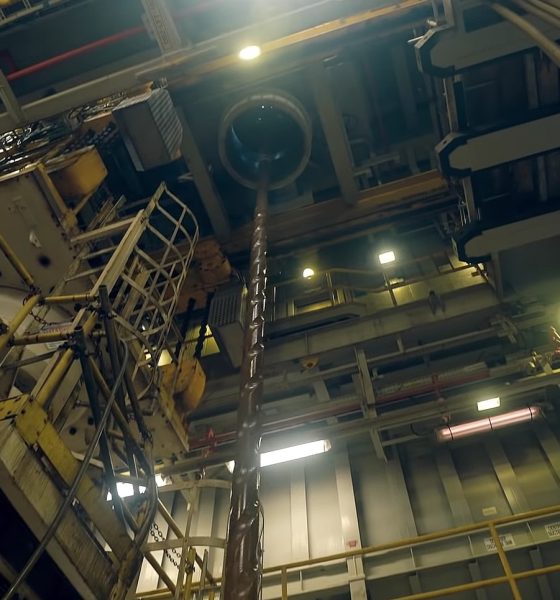

News
Leading US Bank calls for renewed fossil fuel support as Tesla shifts industry to sustainables
The Annual World Economic Forum Annual Meeting in Davos, Switzerland took place recently. The Forum is a great opportunity for the world’s leaders to combine their knowledge and ideas in a way that will make our world more efficient. At a time when sustainable solutions are emerging at an accelerated rate thanks to companies like Tesla, it was a chance for leaders across numerous industries to establish their stance on the climate debate.
A few big names were among the guests who were in attendance of the Davos meeting. U.S. President Donald Trump, Billionaire George Soros, German Chancellor Angela Merkel, and Environmentalist Greta Thunberg are few notable names who were present.
During the event, Bank of America CEO Brian Moynihan suggested that oil companies need support now more than ever as the world begins its transition to more sustainable and environmentally-conscious forms of energy. “We should lend to those companies to help them make progress faster, rather than divest from them which won’t help them at all,” he said in an interview with Andy Serwer.
Moynihan’s comments were a response to Thunburg’s claims that no progress has been made toward reducing the emissions of environmentally-damaging carbon gases. He believes that plenty of progress has been made, but he also believes that it could be expedited if more steps were taken.
He’s right, more companies should do more to assist the cause. But there are not enough companies taking the global crisis of climate change seriously enough. While companies continue to make pledges toward reducing carbon emissions by a certain amount before a certain year, what is funding oil companies going to do toward making the world a more environmentally-friendly place?
Moynihan was on a panel with Duke Energy CEO Lynn Good at the Davos Forum. Duke has pledged to reduce carbon emissions by 50% by the year 2030.
“Think about that. That’s a power company. If they’re moving with that kind of pace, and we are saying we need more alternative energy to meet our goals, that business system will get more progress,” he said. “And so yes, we’ve got to make more progress. We’ve got to make it faster. But we’ve got to do it in an aligned way.”
But there are other companies that have the mindset to take two steps forward and one step back.
Amazon CEO Jeff Bezos is the head of one of the biggest companies in the world. The e-commerce giant made huge strides toward environmental sustainability when it became an investor in electric vehicle manufacturer Rivian, whose zero-emissions R1T is set to compete with Tesla’s brutalist Cybertruck. Amazon also purchased 100,000 electric delivery vans from Rivian in an attempt to reduce the amount of carbon emissions from its vehicles.
A few weeks later, a press release from one of the world’s biggest oilfield service companies stated Amazon was one of the main contributors to the U.S. Oil and Gas Industry’s “Production 4.0” forum that would help accelerate and improve oil production. Amazon’s employees pushed Bezos to make changes that would help the Earth. While he promised electric vans and more conscious packaging, Bezos was directly contributing to an industry that continues to harm the Earth in many ways.
As the head of a large bank like Bank of America or one of the biggest companies in the world like Amazon, the responsibility is huge. The environmental impact of these companies is huge and requires extra attention from large corporations. The power these companies hold is the possible key to environmental longevity, and it starts with the halting of oil funding. If the Bank of America CEO’s statements are any indication though, the transition to sustainability may end up being a bit longer than expected.

Elon Musk
Elon Musk’s X will start using a Tesla-like software update strategy
The initiative seems designed to accelerate updates to the social media platform, while maintaining maximum transparency.

Elon Musk’s social media platform X will adopt a Tesla-esque approach to software updates for its algorithm.
The initiative seems designed to accelerate updates to the social media platform, while maintaining maximum transparency.
X’s updates to its updates
As per Musk in a post on X, the social media company will be making a new algorithm to determine what organic and advertising posts are recommended to users. These updates would then be repeated every four weeks.
“We will make the new 𝕏 algorithm, including all code used to determine what organic and advertising posts are recommended to users, open source in 7 days. This will be repeated every 4 weeks, with comprehensive developer notes, to help you understand what changed,” Musk wrote in his post.
The initiative somewhat mirrors Tesla’s over-the-air update model, where vehicle software is regularly refined and pushed to users with detailed release notes. This should allow users to better understand the details of X’s every update and foster a healthy feedback loop for the social media platform.
xAI and X
X, formerly Twitter, has been acquired by Elon Musk’s artificial intelligence startup, xAI last year. Since then, xAI has seen a rapid rise in valuation. Following the company’s the company’s upsized $20 billion Series E funding round, estimates now suggest that xAI is worth tens about $230 to $235 billion. That’s several times larger than Tesla when Elon Musk received his controversial 2018 CEO Performance Award.
As per xAI, the Series E funding round attracted a diverse group of investors, including Valor Equity Partners, Stepstone Group, Fidelity Management & Research Company, Qatar Investment Authority, MGX, and Baron Capital Group, among others. Strategic partners NVIDIA and Cisco Investments also continued support for building the world’s largest GPU clusters.
News
Tesla FSD Supervised wins MotorTrend’s Best Driver Assistance Award
The decision marks a notable reversal for the publication from prior years, with judges citing major real-world improvements that pushed Tesla’s latest FSD software ahead of every competing ADAS system.

Tesla’s Full Self-Driving (Supervised) system has been named the best driver-assistance technology on the market, earning top honors at the 2026 MotorTrend Best Tech Awards.
The decision marks a notable reversal for the publication from prior years, with judges citing major real-world improvements that pushed Tesla’s latest FSD software ahead of every competing ADAS system. And it wasn’t even close.
MotorTrend reverses course
MotorTrend awarded Tesla FSD (Supervised) its 2026 Best Tech Driver Assistance title after extensive testing of the latest v14 software. The publication acknowledged that it had previously criticized earlier versions of FSD for erratic behavior and near-miss incidents, ultimately favoring rivals such as GM’s Super Cruise in earlier evaluations.
According to MotorTrend, the newest iteration of FSD resolved many of those shortcomings. Testers said v14 showed far smoother behavior in complex urban scenarios, including unprotected left turns, traffic circles, emergency vehicles, and dense city streets. While the system still requires constant driver supervision, judges concluded that no other advanced driver-assistance system currently matches its breadth of capability.
Unlike rival systems that rely on combinations of cameras, radar, lidar, and mapped highways, Tesla’s FSD operates using a camera-only approach and is capable of driving on city streets, rural roads, and freeways. MotorTrend stated that pure utility, the ability to handle nearly all road types, ultimately separated FSD from competitors like Ford BlueCruise, GM Super Cruise, and BMW’s Highway Assistant.
High cost and high capability
MotorTrend also addressed FSD’s pricing, which remains significantly higher than rival systems. Tesla currently charges $8,000 for a one-time purchase or $99 per month for a subscription, compared with far lower upfront and subscription costs from other automakers. The publication noted that the premium is justified given FSD’s unmatched scope and continuous software evolution.
Safety remained a central focus of the evaluation. While testers reported collision-free operation over thousands of miles, they noted ongoing concerns around FSD’s configurable driving modes, including options that allow aggressive driving and speeds beyond posted limits. MotorTrend emphasized that, like all Level 2 systems, FSD still depends on a fully attentive human driver at all times.
Despite those caveats, the publication concluded that Tesla’s rapid software progress fundamentally reshaped the competitive landscape. For drivers seeking the most capable hands-on driver-assistance system available today, MotorTrend concluded Tesla FSD (Supervised) now stands alone at the top.
News
Elon Musk’s Grokipedia surges to 5.6M articles, almost 79% of English Wikipedia
The explosive growth marks a major milestone for the AI-powered online encyclopedia, which was launched by Elon Musk’s xAI just months ago.

Elon Musk’s Grokipedia has grown to an impressive 5,615,201 articles as of today, closing in on 79% of the English Wikipedia’s current total of 7,119,376 articles.
The explosive growth marks a major milestone for the AI-powered online encyclopedia, which was launched by Elon Musk’s xAI just months ago. Needless to say, it would only be a matter of time before Grokipedia exceeds English Wikipedia in sheer volume.
Grokipedia’s rapid growth
xAI’s vision for Grokipedia emphasizes neutrality, while Grok’s reasoning capabilities allow for fast drafting and fact-checking. When Elon Musk announced the initiative in late September 2025, he noted that Grokipedia would be an improvement to Wikipedia because it would be designed to avoid bias.
At the time, Musk noted that Grokipedia “is a necessary step towards the xAI goal of understanding the Universe.”
Grokipedia was launched in late October, and while xAI was careful to list it only as Version 0.1 at the time, the online encyclopedia immediately earned praise. Wikipedia co-founder Larry Sanger highlighted the project’s innovative approach, noting how it leverages AI to fill knowledge gaps and enable rapid updates. Netizens also observed how Grokipedia tends to present articles in a more objective manner compared to Wikipedia, which is edited by humans.
Elon Musk’s ambitious plans
With 5,615,201 total articles, Grokipedia has now grown to almost 79% of English Wikipedia’s article base. This is incredibly quick, though Grokipedia remains text-only for now. xAI, for its part, has now updated the online encyclopedia’s iteration to v0.2.
Elon Musk has shared bold ideas for Grokipedia, including sending a record of the entire knowledge base to space as part of xAI’s mission to preserve and expand human understanding. At some point, Musk stated that Grokipedia will be renamed to Encyclopedia Galactica, and it will be sent to the cosmos.
“When Grokipedia is good enough (long way to go), we will change the name to Encyclopedia Galactica. It will be an open source distillation of all knowledge, including audio, images and video. Join xAI to help build the sci-fi version of the Library of Alexandria!” Musk wrote, adding in a later post that “Copies will be etched in stone and sent to the Moon, Mars and beyond. This time, it will not be lost.”








